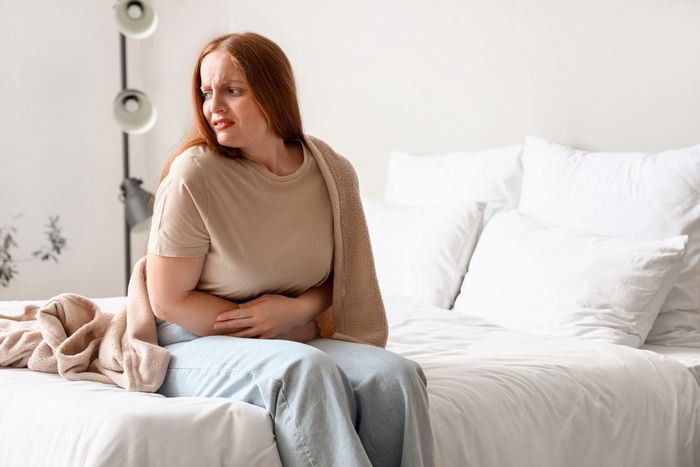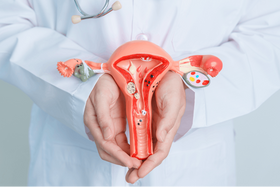Does PID Affect the Menstrual Cycle? An Expert Discussion
Published August 23, 2023.

Pelvic Inflammatory Disease (PID) is a complex condition that involves inflammation of the pelvic area, including the upper genital tract, such as the uterus, fallopian tubes, and ovaries. It's characterized by swelling, heat, and redness, although these signs are internal. In 85% of cases, this infection is caused by sexually transmitted pathogens and bacteria, but only about 10-15% developed PID from gonorrhea and chlamydia. Numerous other bacteria may also lead to PID, such as streptococcus or certain influenza strains.
Due to the location PID affects, menstrual cycle awareness is crucial. Overall, PID can impact the cycle in negative ways, particularly causing chronic pain and irregularity. This, in turn, affects fertility and conception. To better understand the true correlation between PID and the menstrual cycle, we spoke to Natasha Hogan—an experienced healthcare professional, infertility expert, and author of Pregnancy After Infertility: A Guide to What’s Next & What’s Different. She shares her wisdom on the effects and treatment options women should know when dealing with PID.
PID: In-Depth
What Causes PID?
Various factors could increase susceptibility to PID, such as:
- Multiple sex partners
- Sexual practices, including oral sex
- Pleasure toys, especially if not kept properly clean
- Douching, which alters the vagina's microbiological environment, potentially flushing bacteria into the uterus
- Procedures like IUD insertion or dilation and curettage (D&C), sometimes performed after an abortion or miscarriage
- Lower concentrations of protective chlamydial antibodies
- Larger cervical ectopy in younger age groups (this is when the cells inside the cervix are visible outside of it)
- Smoking increases the chance of developing PID
Tip: To guard against getting the infection repeatedly, it's advised to abstain from sex until your partner or partners have had treatment for any STDs or if PID has been previously diagnosed. Make sure you take precautions when conducting any oral, physical sexual pleasure. It's always recommended to consult with a healthcare provider to understand personal risks and to take appropriate precautions and treatments tailored to individual needs and medical history.
PID Symptoms
The symptoms of PID can vary but generally include:
- Deep discomfort or pain during sex, felt inside the pelvis
- Bleeding between periods and after sex
- Heavy and painful periods
- Unusual vaginal discharge, particularly if yellow, green, or smelly
- Fever and pain during urination
Connected Issues
Some other issues highlight how PID and infections are connected:
- Tubo-ovarian abscess (TOA): This condition can be polymicrobial, meaning it is caused by multiple and various pathogens. And this study shows that 13.9% of those in hospital for PID have TOA, which is more prevalent among those with chlamydia too.
- Dyspareunia: This primarily concerns insufficient lubrication. "If you don't have what you would consider natural feelings when being sexually aroused or going into the motion of having intercourse, everything can pull and hurt," explains Hogan. PID can become an irritation because of constant infection, making sex painful. This pain is not limited to initial intrusion; it can be felt in various ways, even hindering full orgasms since there may be no fluid in the area.
- Endometriosis: While there are similarities pathogenically, the two conditions occur in different locations, so they are not likely to increase the risk of each other. "From the standpoint that PID is related to intrusion within the uterus and endometriosis occurs on the outside of it, they are two distinct things," says Hogan.
Detection Methods
Current knowledge on PID detection emphasizes broader screening and diagnostic approaches. Early diagnosis and treatment are crucial to avoid chronic concerns, and a broad spectrum of testing methods is available, such as:
- Biopsies
- Swab cultures
- Pelvic exams
- Imaging (ultrasound)
- Laparoscopy
Note: Negative results from testing don't necessarily exclude a PID diagnosis.
PID and the Menstrual Cycle
PID can significantly affect the reproductive system, including changes to menstrual cycles, hormone levels, and physical structures within the system. Let's look at the different aspects of menstruation and the reproductive system and how PID can impact them:
Cycle Length
It can sometimes increase the length of a period due to the inflammation that irritates the reproductive organs. In some extreme cases, PID can make it nearly impossible to conceive because irregular ovulation or anovulation are harder to track. "This underscores the importance of not adhering too rigidly to textbook expectations about menstrual cycles. Variations can occur, and something unusual, like a cycle lasting up to 62 days, might indicate a problem," explains Hogan.
Can PID cause a missed period?
Some people may find that their cycle length gets a bit shorter. However, PID usually leads to longer cycles. Because of this, your period can sometimes be delayed and irregular, not necessarily skipped.
Ovulation
Some ways your ovulation may be impacted are:
- PID can affect hormones such as the luteinizing hormone (LH) and thyroid-stimulating hormone (TSH), throwing the entire system out of balance. This hormonal disruption can cause irregular ovulation or even no ovulation.
- The inflammation associated with PID can irritate the reproductive organs, leading to disruptions in the normal ovulatory cycle.
- The general illness caused by PID, including symptoms like increased white blood cell count and lethargy, can interfere with the body's normal processes, including ovulation.
Bleeding
With PID, bleeding may be heavier during periods, and the blood may even appear darker as white blood cells try to combat the infection. This could be because the body is trying to rid itself of the bacteria present. Some may report their menstrual blood as more "stringy" or "gummy." Understanding your bleeding patterns can help you identify when there's a change that could be symptomatic of an infection, which you can address with your doctor.
Reproductive System and Fertility
PID can disrupt the entire reproductive system, potentially even leading to infertility. There may be less chance of getting pregnant due to:
- Fallopian tube damage: PID can lead to scarred or blocked tubes, which can prevent the egg from meeting the sperm for fertilization in the uterus.
- Abscesses: If these are in the reproductive tract, they can obstruct the normal fertilization process.
- Lowered sexual desire: Pain and discomfort can lead to a reduced interest in sexual activity, lowering the chances of conception. Also, any infection will raise white blood cell count and affect other markers, such as the erythrocyte sedimentation rate (ESR), draining energy from the body and potentially leading to lethargy.
- Implantation disruption: Sometimes, PID's effect on the reproductive system's internal environment can potentially interfere with egg fertilization in the uterus. But this is a complex issue with less research on it in relation to PID.
Tip: If you're trying to conceive and are concerned about PID, it's essential to work with healthcare providers who specialize in fertility and reproductive health. They'll be able to guide you based on your specific situation. Some options they might discuss with you are in vitro fertilization (IVF), surgery, fertility medications, intrauterine insemination (IUI), lifestyle changes and supportive care, and surrogacy or adoption.
» Check out these 5 steps to repairing your period
How Is PID Treated?
PID is usually treated with a combination of approaches, and early treatment is essential to prevent complications. Unrecognized or "silent" PID may still lead to tubal factor infertility, so seeking treatment within 3 days of noticing lower abdominal pain can reduce risks. However, any treatments should only be implemented under the guidance and monitoring of your healthcare professional.
Here's a general outline of how it's treated:
Antibiotics
Since PID is often caused by bacterial infections, antibiotics are the primary treatment. The specific antibiotics prescribed may depend on the suspected bacteria causing the infection. Sometimes a combination of antibiotics is used to cover a broader range of bacteria. This approach is most effective when implemented early on.
Hospitalization
In more severe cases or when complications are present, hospitalization may be required. Intravenous (IV) antibiotics might be administered, and close monitoring will ensure the best possible care.
Surgical Options
Surgeons may offer procedures to address abscesses or adhesions, but these come with added dangers and can result in trauma. "You have to weigh the risks with the benefits, particularly if you're keen on having a natural birth and want to explore different surgical interventions," advises Hogan. Each time surgery is performed, the risk to the uterine wall increases, and it may become so thin that it could rupture.
» Are you having irregular periods? Find out some surprising causes of this here
Decode Your Body's Rhythms With Cycle Tracking
While PID has a clear impact on numerous stages of the menstrual cycle, from length to fertility, there are different options you can explore to help treat the infection under medical professionals' care. Ensuring your knowledge of the condition is up-to-date and comprehensive can help prepare you should you get PID, as well as help you take precautionary lifestyle changes that can lower your chances of the infection. Then, easiest of all, you can take your cycle and fertility tracking into your own hands with tools like Tempdrop's wearable tracker. This device monitors your basal body temperature (BBT) while you sleep and the app enables you to track additional fertility symptoms which will help you notice patterns, better understand your body, and be a crucial first data-gathering step should you wish to try and conceive.





